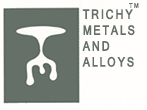Lead as a metal has unique properties, in particular malleability, ease of production, ease of melting & joining and high level of corrosion resistance.
As a result, it has been used for roofing, windows, piping, kitchen/tableware and ornamental uses for many centuries. However, the largest single use of lead today is in the manufacture of lead-acid storage batteries – a vital part of every automobile. Lead is also widely used in the communications industry. Around 3 million tonnes of lead are mined in the world each year. A further 3 million tonnes of lead are produced from secondary sources – by recycling scrap lead from products such as sheets, pipes and batteries. Secondary production or recycling is now widely practiced and currently accounts for about 50 percent of usage worldwide. At least three-quarters of all lead used goes into products which are suitable for recycling. Thus lead has the highest success rate for recycling among all the common non-ferrous metals.



